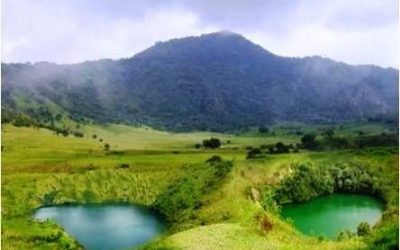
By Joyce Mbong &Stanley Acham
The validation of this Technical Note, was a culmination of several working sessions between the Environment and Rural Development Foundation (ERuDeF) and the Cameroon Herpatological Conservation Biology Foundation (CAMHERP-CBF), technical staff on the draft Technical Note since November 2017.
Chairing the workshop, the Littoral Regional Delegate of the Ministry of Forestry and Wildlife (MINFOF), Mbelley Julien Desire, saluted the contributions of ERuDeF and CAMHERP-CBF to Biodiversity conservation in Cameroon. He implored both organisations to be steadfast and industrious in all they do in conserving the country’s biodiversity. The Regional Delegate expressed his earnest desire for the Proposed Mount Muanenguba Herpetological Sanctuary to be gazetted. This according to him, will greatly contribute in assisting the Government meet up with her objective of putting about 30% of the country’s estate under permanent protection.

“Mt Muanenguba is a water shed for the river Moungo and Wouri, it also has a variety of reptiles and amphibians endemic to the mountain and which are also of high conservation status. Converting this area into a protected area is a way of meeting up with the governments objectives that of protecting about 30% of forest land. Also, the living standards of the local communities will improve through the provision of alternative livelihood activities,” he explained.
Though, validated, Divisional Delegates of Forestry and Wildlife for Moungo and Littoral were asked to go to the field to confirm all the information on the Technical Note, most especially the boundary demarcations. This is to avoid any land dispute or other confrontations with the surrounding communities when the area is eventually protected. This activity will be carried out before the technical note will be submitted to the Ministry of Forestry and Wildlife (MINFOF).
Once this confirmation visit is made to the proposed protected area, the technical note will be submitted to MINFOF for evaluation. In case of no descending voice, MINFOF , will approve the publication of a Public Notice, formally indicating government’s recognition.
Besides the validation of the Technical Note, the workshop equally culminated in agreement that the proposed protected area will be called Mount Manengouba Herpetological Sanctuary, upon creation.
The Technical Note validation workshop brought together several MINFOF authorities from the Littoral and South West Regions (Regional Delegate of MINFOF Littoral, Regional Chiefs of Wildlife and protected Areas (SRFAP) for Littoral and South West and the Divisional Delegates for Moungo and Kupe Muanenguba) and the technical teams of ERuDeF and CAMHERP-CBF. It was carried out with the support of Rainforest Trust-USA.



